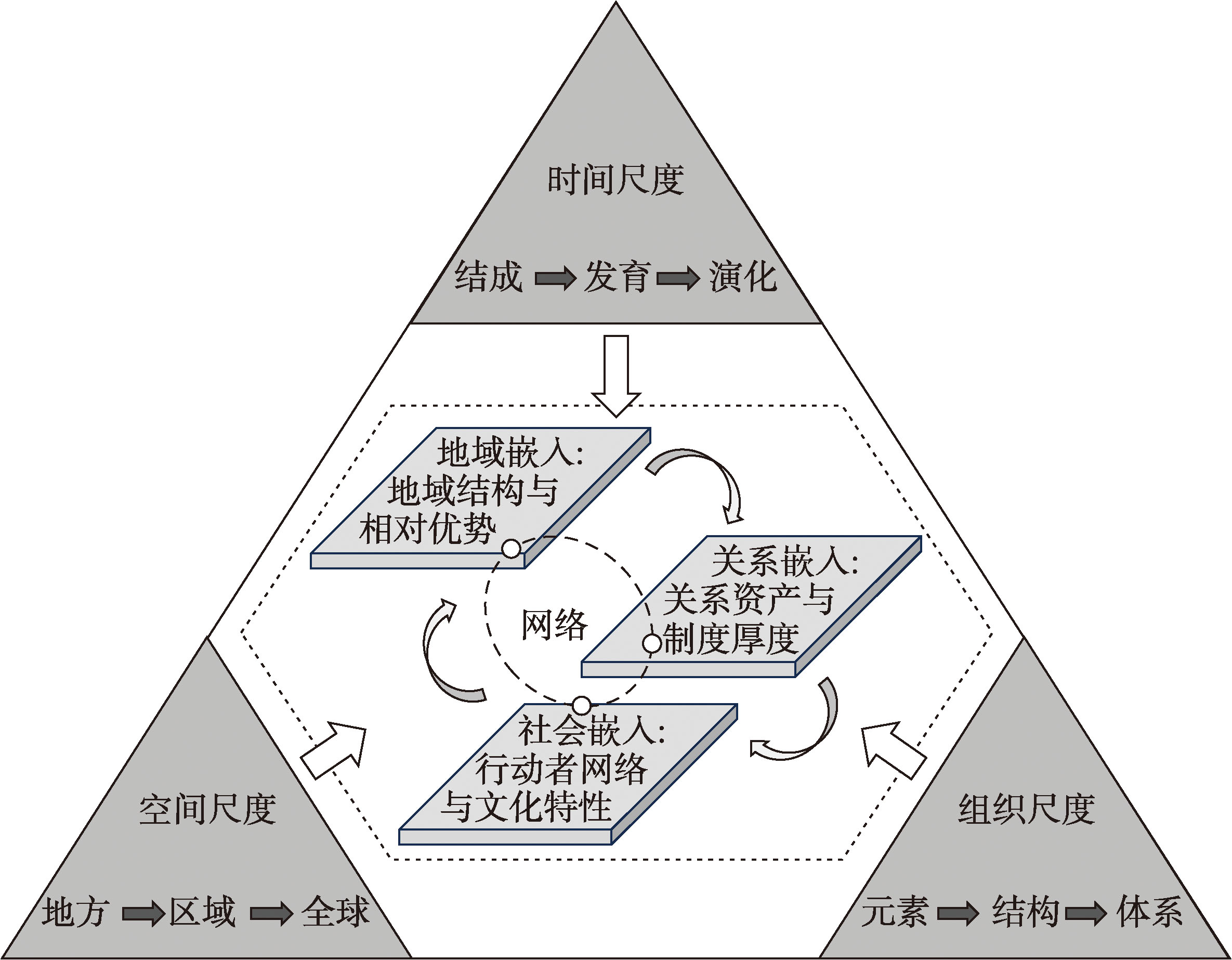

Spatial organization characteristics and driving mechanisms of new energy vehicles production network: A case study of Tesla Shanghai
Received date: 2024-03-11
Revised date: 2025-02-05
Online published: 2025-06-13
Supported by
National Natural Science Foundation of China(42371187)
Philosophy and Social Science Innovation Talent Support Program of Henan Province(2024-CXRC-09)
Excellent Youth Project of Natural Science Foundation of Henan Province(242300421142)
In response to climate change and global environmental crisis, more and more countries have started to pursue a low-carbon economy. With significantly reduced or no tailpipe emissions, new energy vehicles (NEVs) - vehicles that are powered by alternatives to fossil fuels, such as electricity and non-traditional fuels - are gaining popularity and becoming the future of the automotive industry. Using NEV supplier data of Tesla's Shanghai Gigafactory (Tesla Shanghai), the paper performed a network analysis based on firm headquarter-subsidiary connections to map out the factory's global production network (GPN), revealed the spatial configuration of the network, and explored the forces driving its formation and development. The research yielded several findings. First, the global production of auto parts for Tesla Shanghai resembles a typical GPN with a core-periphery structure. Tesla Shanghai has established strong high-frequency connections with economic centers (or manufacturing centers with strong R&D capability) located in East Asia, North America, and Europe. Second, within the Tesla Shanghai's GPN, four supply chain systems - smart electronic components, battery and electric drive systems, thermal management systems, and chassis and trim - display varying hierarchical structures. Third, within each of the four supply chain networks, most communities (or subnetworks) span across geographical and administrative boundaries, connecting cities around the world through modular production of auto parts. These communities demonstrate strong internal heterogeneity with an emerging core-periphery structure of network nodes. Using the four explanatory variables of the GPN 2.0 framework (i. e., cost-capability ratio, market imperatives, financial discipline, and risk environment), the paper further analyzed the main factors that shape the highly complex NEVs GPN of Tesla Shanghai from the perspectives of global environment, market demand, technological linkages, and local competitive advantages. The study contributes to the new economic geography literature by providing an interesting case study. The findings of the research provide theoretical insights and practical implications for the innovation and sustainable development of the NEV industry.

CHEN Xiaofei , HU Yonggui , CAI Heqian , MIAO Changhong . Spatial organization characteristics and driving mechanisms of new energy vehicles production network: A case study of Tesla Shanghai[J]. Acta Geographica Sinica, 2025 , 80(6) : 1620 -1635 . DOI: 10.11821/dlxb202506012
| [1] |
[唐宜红, 符大海. 经济全球化变局、经贸规则重构与中国对策: “全球贸易治理与中国角色”圆桌论坛综述. 经济研究, 2017, 52(5): 203-206.
|
| [2] |
[贺灿飞, 陈航航. 参与全球生产网络与中国出口产品升级. 地理学报, 2017, 72(8): 1331-1346.]
|
| [3] |
[朱晟君, 杨博飞, 刘逸. 经济全球化变革下的世界经济地理与中国角色. 地理学报, 2022, 77(2): 315-330.]
|
| [4] |
|
| [5] |
|
| [6] |
|
| [7] |
[刘逸. 关系经济地理的研究脉络与中国实践理论创新. 地理研究, 2020, 39(5): 1005-1017.]
|
| [8] |
[赵浚竹, 孙铁山, 李国平. 中国汽车制造业集聚与企业区位选择. 地理学报, 2014, 69(6): 850-862.]
|
| [9] |
[赵梓渝, 王士君, 陈肖飞. 模块化生产下中国汽车产业集群空间组织重构: 以一汽-大众为例. 地理学报, 2021, 76(8): 1848-1864.]
|
| [10] |
|
| [11] |
|
| [12] |
|
| [13] |
[刘卫东, 薛凤旋. 论汽车工业空间组织之变化: 生产方式转变的影响. 地理科学进展, 1998, 17(2): 3-16.]
|
| [14] |
|
| [15] |
[赵梓渝, 王士君, 陈肖飞, 等. “全球—地方”视角下中国汽车生产网络的跨域关联与影响因素: 一汽-大众案例. 地理科学进展, 2022, 41(5): 741-754.]
|
| [16] |
[何瑶, 杨永春, 王绍博. 价值链视角下中国新能源汽车产业网络及其机制. 地理学报, 2023, 78(12): 3018-3036.]
|
| [17] |
[丛海彬, 邹德玲, 高博, 等. “一带一路”沿线国家新能源汽车贸易网络格局及其影响因素. 经济地理, 2021, 41(7): 109-118.]
|
| [18] |
[齐玮, 李启昊. 全球新能源汽车贸易网络动态演化特征及影响因素研究. 世界地理研究, 2024, 33(2): 1-14.]
|
| [19] |
[王宏起, 汪英华, 武建龙, 等. 新能源汽车创新生态系统演进机理: 基于比亚迪新能源汽车的案例研究. 中国软科学, 2016(4): 81-94.]
|
| [20] |
[杨恺钧, 曹安琪, 方慈慧. 新能源汽车产业集聚对区域绿色经济效率的影响: 基于长江经济带的实证研究. 资源与产业, 2024, 26(1): 35-49.]
|
| [21] |
[刘鸿浩, 鲁宇, 林绮琪, 等. “双碳”目标下新能源汽车产业链与创新链协同发展路径研究: 以肇庆市为例. 当代经济, 2023, 40(12): 66-74.]
|
| [22] |
[苗长虹. 变革中的西方经济地理学: 制度、文化、关系与尺度转向. 人文地理, 2004, 19(4): 68-76.]
|
| [23] |
[苗长虹, 魏也华, 吕拉昌. 新经济地理学. 北京: 科学出版社, 2011: 117-128.]
|
| [24] |
|
| [25] |
|
| [26] |
|
| [27] |
|
| [28] |
[吴康, 方创琳, 赵渺希. 中国城市网络的空间组织及其复杂性结构特征. 地理研究, 2015, 34(4): 711-728.]
|
| [29] |
[陈肖飞, 杜景新, 李元为, 等. GPN视角下华为手机生产网络特征与影响因素研究. 地理研究, 2024, 43(1): 51-65.]
|
| [30] |
[刘清, 杨永春, 蒋小荣, 等. 基于全球价值链的全球化城市网络分析: 以苹果手机供应商为例. 地理学报, 2021, 76(4): 870-887.]
|
| [31] |
|
| [32] |
|
/
| 〈 |
|
〉 |